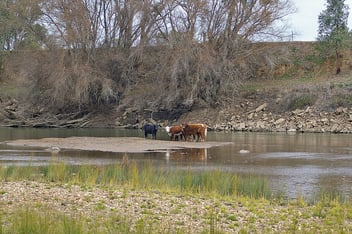Victoria turns to desalination to secure drinking water supply
The Victorian Government will place the largest desalinated water order in the state’s history, as dry conditions keep water storages low.
Data from the Bureau of Meteorology (BOM) shows Victoria’s climate has been getting warmer over recent decades. This trend is expected to continue, with the BOM’s 2019 Autumn Outlook forecasting a drier and warmer than average autumn.
Water Minister Lisa Neville told the ABC the dry conditions would necessitate an order of between 50 and 150 GL from Victoria’s Wonthaggi desalination plant.
The size of the water order is based on advice from Melbourne Water in consultation with Melbourne’s three water retail corporations: City West Water, South East Water and Yarra Valley Water.
"If you have a look at the dry conditions and our storage levels [and] the predictions from the Bureau I'm pretty confident that advice to me will be we'll need a substantial desal order,'' Neville said.
"We can't take any risks here around our storage levels. We have got a hot, dry autumn ahead unfortunately [from] what the Bureau is telling us, so I think that we will see one of our biggest orders.”
The Wonthaggi desalination plant can supply up to 150 GL of drinking water per year, which is about a third of Melbourne’s annual water consumption.
Melbourne water storages low
Neville’s comments come as Melbourne Water data shows the city and region’s storage levels dipped to 56.5% in February. This is the lowest they’ve been at this time of year since 2011, when the state was still recovering from the Millennium Drought. As of March, the storages are at 55.3%.
According to the utility, a changing climate with longer dry periods, higher temperatures and drier soils have reduced streamflows into reservoirs.
Average streamflows between 2014 and 2018 were just 5% above those observed during the Millennium Drought, and 36% below the historic average from 1913 to 1996.
While it’s normal for storage levels to fall at this time of year, Melbourne Water Acting Executive General Manager of Service Delivery Craig Dixon said the state of the water storages reflects ongoing low flows.
“Low streamflows to our reservoirs, combined with Melbourne’s growing population, has had a significant impact on our storage levels,” he said.
Melbourne’s population has grown by more than 1.4 million people since 2001, and total annual water use has increased by nearly 11% over the past five years.
There has also been a shift in the streamflow response to rainfall in many catchments, with less streamflow generated for the same amount of rain.
Summer 2018-19 rainfall over Melbourne’s four major harvesting catchments was 111.8 mm. This was 46% below the 30-year average and less than the 122.5 mm seen during the driest summer of the Millennium Drought.
Summer streamflows into Melbourne's storages were 37.1 billion, down from 71.9 billion in the previous year and 43.8% below the 30-year average.
Water to flow from Melbourne to Geelong
Geelong’s water storages have also dropped to levels not seen since the Millennium Drought, prompting Barwon Water to place an order for 1.3 GL of water from the Thomson/Yarra catchment.
In Geelong, rainfall is about 43% below average and storages are at 41% capacity, down from 56.5% the previous year.
Water will be delivered through a 59 km pipeline from Melbourne’s supply network to the Lovely Banks storage basins.
“The Melbourne to Geelong pipeline was constructed as an insurance policy against future drought, and now, more than ever, we’re seeing just how valuable it is,” Neville said.
“Turning on the pipeline between Melbourne and Geelong means homes, community facilities and businesses have a secure water supply, free from severe water restrictions.”
There will be no additional cost to Barwon Water customers as a result of switching on the pipeline.
Barwon Water has previously used groundwater from the Barwon Downs aquifer to supplement Geelong supplies.

